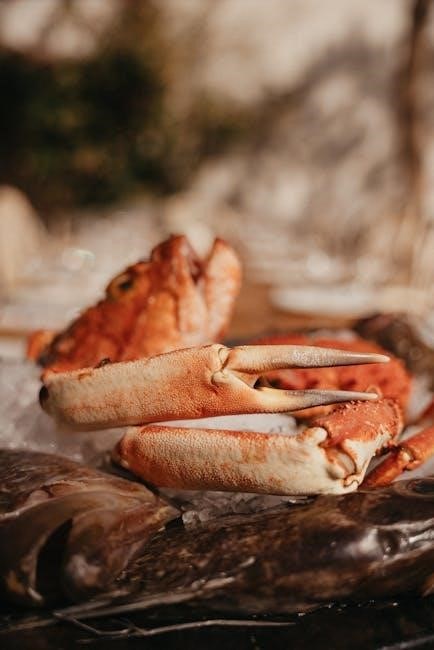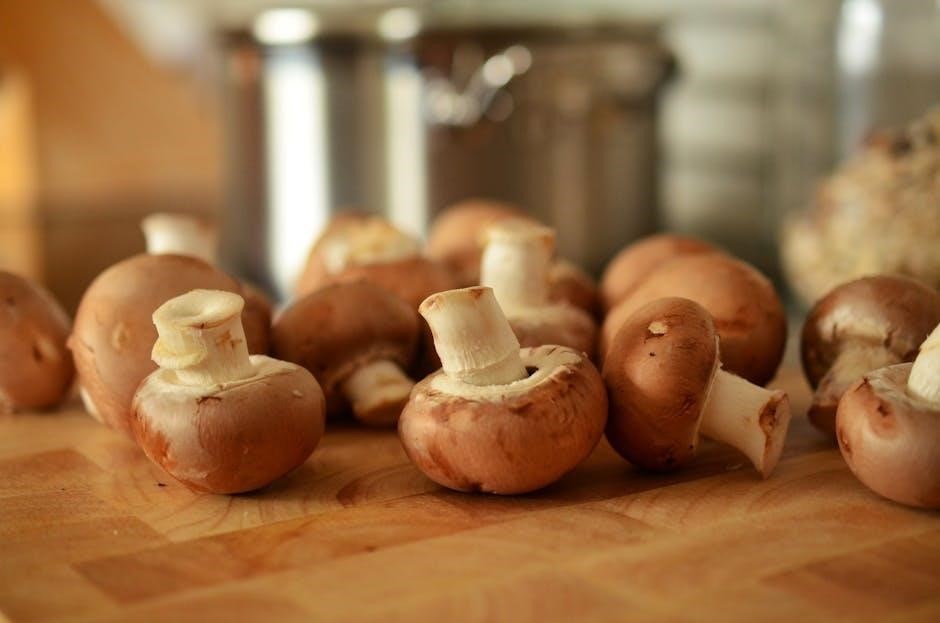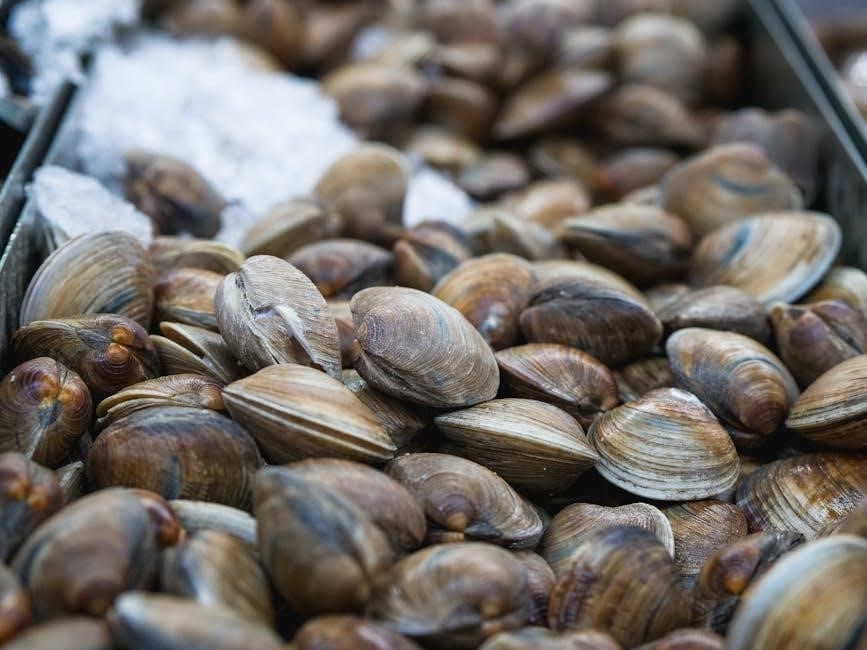Welcome to the 30-Day Raw Food Diet Plan, a transformative journey focused on whole, unprocessed foods to boost health and energy. This structured program helps you adopt a diet rich in fruits, vegetables, nuts, and seeds, all while avoiding cooking above 118°F. Designed for simplicity, it offers meal planning tips and delicious recipes to make your transition smooth and sustainable.
Understanding the Raw Food Diet
The raw food diet, also known as raw foodism, focuses on consuming uncooked, unprocessed foods to maximize nutritional value. It emphasizes fruits, vegetables, nuts, seeds, and sprouted grains, avoiding anything heated above 118°F to preserve enzymes. This approach believes that cooking destroys vital nutrients and natural enzymes, which are essential for optimal digestion and health. A raw food diet is not just about eating salads; it includes creative dishes like smoothies, soups, and dehydrated recipes. By eliminating processed foods, it aims to detoxify the body, boost energy, and improve overall well-being; Many people adopt this diet for its potential to enhance digestion, support weight loss, and promote a more vibrant, healthy lifestyle.
Benefits of a 30-Day Raw Food Challenge
Embarking on a 30-day raw food challenge offers numerous health benefits, including improved digestion, increased energy levels, and enhanced mental clarity. By focusing on whole, unprocessed foods, you can experience natural weight loss and a stronger immune system. The diet’s emphasis on fruits, vegetables, and nuts provides essential vitamins, minerals, and antioxidants that combat free radicals and support overall well-being. Many participants report clearer skin, reduced inflammation, and a reduction in chronic pain. Additionally, the challenge fosters healthier eating habits and a renewed appreciation for nutrient-dense foods. With proper planning, this 30-day journey can lead to long-term positive changes in your health and lifestyle, making it a worthwhile commitment for those seeking transformation.
Getting Started with the Raw Food Diet
Starting your raw food journey begins with planning and preparation. Stock your pantry with fresh fruits, vegetables, nuts, and seeds. Invest in essential tools like a high-quality blender and food processor to simplify meal prep. A positive mindset and clear goals will help you stay committed. Begin with simple recipes like smoothies and salads, gradually experimenting with more complex dishes. Proper planning ensures a smooth transition, setting you up for success in your 30-day raw food challenge.
Preparation and Mindset for Success
Embracing a raw food diet requires a strong mindset and thorough preparation. Start by clearing your kitchen of processed foods and stocking up on fresh, organic ingredients. A positive attitude and clear goals will help you stay motivated. Invest in essential tools like a high-quality blender, food processor, and spiralizer to simplify meal preparation. Educate yourself about raw food basics, including proper food combining and hydration strategies. Be prepared for initial challenges, such as detox symptoms, and stay committed to your health journey. Surround yourself with supportive resources, like raw food communities or online guides, to maintain inspiration and guidance throughout your 30-day plan.
Essential Tools and Ingredients
To thrive on a raw food diet, having the right tools and ingredients is crucial. Invest in a high-quality blender and food processor for creating smoothies, sauces, and dressings. A spiralizer will help craft zucchini noodles and other vegetable-based dishes, while a mandoline slicer is perfect for thinly slicing fruits and vegetables. Glass containers are ideal for storing raw meals and snacks. Essential ingredients include fresh fruits, leafy greens, nuts, seeds, avocados, and healthy oils like coconut and olive oil. Herbs and spices add flavor without cooking, and superfoods like chia seeds and spirulina boost nutrition. A well-stocked pantry ensures variety and keeps meals exciting throughout your 30-day journey.

Meal Planning for the 30-Day Raw Food Diet

Meal planning is a cornerstone of success, ensuring variety and nutrition. Organize weekly meals, prep ingredients, and explore diverse recipes to stay motivated and satisfied throughout your journey.
Sample Day-by-Day Meal Plan
A well-structured 30-day raw food meal plan ensures variety and nutrition. Days 1-7 focus on gentle detox, featuring smoothies like strawberry ginger gelato and hearty salads. By Days 8-14, incorporate mono-meals and transition foods to simplify digestion. Days 15-21 introduce more diversity, with dehydrated raw crackers and vibrant vegetable wraps. Days 22-28 emphasize enzyme-rich dishes, such as zucchini noodles with pesto. Finally, Days 29-30 celebrate completion with indulgent raw desserts. Each day includes balanced options for breakfast, lunch, dinner, and snacks, ensuring a delicious and satisfying journey.
Breakfast, Lunch, and Dinner Ideas
Start your day with nutrient-packed breakfasts like banana pancakes made from frozen bananas and a touch of cinnamon, or a refreshing smoothie blending berries, spinach, and almond milk. For lunch, enjoy vibrant salads such as kale Caesar with raw vegan dressing or stuffed bell peppers filled with zucchini noodles and pesto. Dinner options include hearty dishes like zucchini lasagna layered with marinara and cashew ricotta, or Thai-inspired coconut curry with spiralized vegetables. Snacks like energy balls made from dates and nuts keep you satisfied between meals. These ideas ensure a diverse and flavorful raw food journey, keeping meals exciting and nourishing throughout the 30-day plan.

Common Challenges and Solutions
Detox symptoms and cravings are common challenges. Stay hydrated, rest, and plan meals in advance. Join support groups or use apps to stay motivated and track progress.
Detox Symptoms and How to Manage Them
Detox symptoms like fatigue, headaches, or nausea may occur as your body eliminates toxins. These are temporary and typically subside within a week. To manage them, stay hydrated with water, herbal teas, or coconut water. Rest when needed and consider gentle exercises like yoga. Incorporate detox-supporting foods such as lemon water, green juices, and leafy greens to aid the process. If symptoms persist, consult a healthcare professional. Remember, detox is a natural part of transitioning to a raw food diet and often leads to improved energy and well-being in the long term.
Staying Motivated and Avoiding Cravings
Staying motivated on a 30-day raw food diet requires setting clear goals and celebrating small victories. Track your progress daily, whether through a journal or a mobile app, to stay accountable. Meal planning is key to avoiding cravings, as it ensures you always have healthy options ready. Incorporate variety in your recipes to keep meals exciting and satisfying. Stay hydrated and prioritize sleep, as fatigue can trigger cravings. Reminder: the benefits of increased energy, clearer skin, and improved health will outweigh temporary cravings. Join a raw food community or find a diet buddy for support. Reward yourself for milestones, like reaching Day 10 or Day 20, to stay inspired and committed to your journey.
Celebrate your 30-day raw food journey! Track your progress, acknowledge milestones, and embrace the newfound energy. Transition smoothly by incorporating raw foods into your long-term lifestyle or gradually introducing cooked meals. Stay inspired, explore new recipes, and continue nurturing your health with whole, vibrant foods.

Tracking Progress and Celebrating Success
Tracking your progress during the 30-day raw food diet is key to staying motivated and understanding your journey. Keep a daily journal to record meals, energy levels, and emotional changes. Use photos to document physical transformations, such as improvements in skin clarity or weight loss. Celebrate milestones, like completing the first week or trying new recipes, to stay inspired. Acknowledge non-scale victories, such as better digestion or increased vitality. By the end of the 30 days, reflect on how far you’ve come and the benefits you’ve experienced. This reflection will help you decide whether to continue with raw foods or gradually incorporate cooked meals. Celebrate your success and embrace the positive changes you’ve made to your lifestyle.
Transitioning Beyond the 30-Day Plan
After completing the 30-day raw food diet, transitioning to a long-term plan is crucial for sustained health benefits. Consider incorporating a high-raw diet, where 50-70% of meals remain raw. Gradually reintroduce cooked foods, focusing on whole, nutrient-dense options like quinoa, brown rice, or steamed vegetables. Listen to your body and adjust based on how you feel. For those committed to raw foodism, explore advanced recipes and techniques, such as dehydrating or fermenting. Whether you continue fully raw or adopt a hybrid approach, the goal is to maintain a balanced, vibrant lifestyle. Use the lessons learned to make informed, health-conscious choices moving forward, ensuring your journey toward wellness continues seamlessly.
